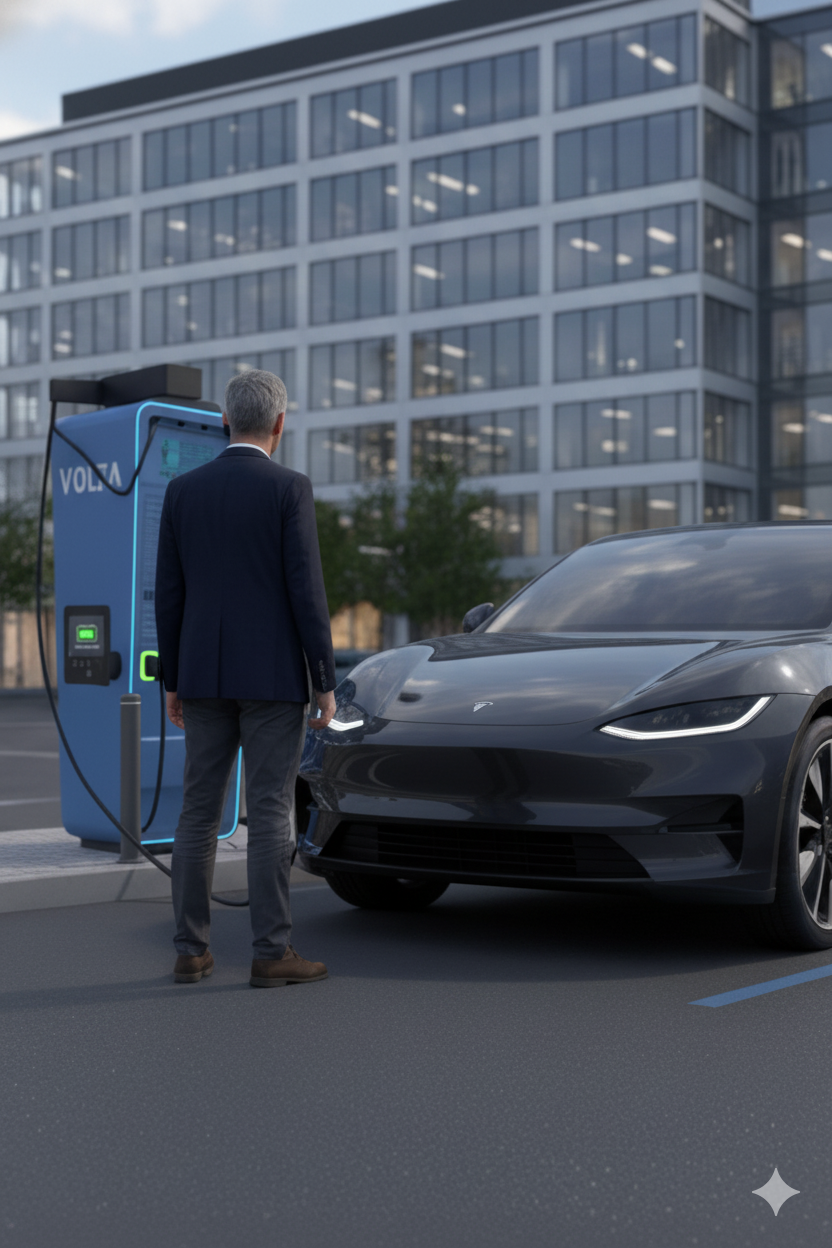EV Infrastructure as an ESG Strategy: How Companies Can Report It

Electric vehicle infrastructure isn't just a technical upgrade – it's also a powerful tool for companies to meet and showcase their Environmental, Social, and Governance (ESG) goals. Installing EV charging stations at your facilities can tangibly demonstrate your commitment to sustainability, helping reduce carbon emissions and support greener transportation.
With the new Corporate Sustainability Reporting Directive (CSRD) in the EU, many companies will need to report detailed sustainability information, and projects like EV chargers can feature prominently in those reports. Additionally, the EU's Taxonomy for sustainable activities explicitly recognizes EV charging infrastructure as contributing to climate change mitigation, which can influence how your investments are perceived by green investors.
In this guide, we'll break down how companies can integrate EV infrastructure into their ESG strategy and reporting. We'll cover the environmental impact, how to align with frameworks like CSRD, GRI, and EU Taxonomy, and even the social/community benefits that come from championing EV adoption.
Environmental Impact: Cutting Carbon Footprint with EV Charging Projects
Understanding Carbon Emission Scopes
You might summarize the combined impact like this: "Installation of EV charging at our facilities has enabled a reduction of 500 tonnes CO₂ annually: 200 t from fleet (Scope 1), 300 t from employee commuting (Scope 3), while adding 100 t to Scope 2 – yielding a net 400 t CO₂ reduction."
You can use smart charger data to report kWh dispensed and estimate fuel avoided, air pollutants reduced, or kilometers driven electric – adding depth to your ESG disclosures.
Aligning with CSRD and EU Taxonomy: Reporting EV Infrastructure
CSRD (Corporate Sustainability Reporting Directive)
EV infrastructure fits into multiple CSRD reporting sections:
- ESRS E1 (Climate): Report on emissions, mitigation actions, and transition plans. EV charging supports decarbonization of fleet and commuting.
- Capital expenditures: Investments in EV charging can be listed as climate-aligned CapEx.
- ESRS E2 (Pollution): EVs reduce local air pollutants and noise.
- ESRS S1 (Own workforce): Workplace EV charging improves employee well-being, retention, and satisfaction.
- Governance: Including EV infrastructure in ESG strategy demonstrates management integration of sustainability goals.
Your CSRD report might include:
- "Decarbonization Strategy" → describing your EV adoption roadmap
- "KPIs" → percentage of sites with chargers, number of chargers, emissions avoided
- "CapEx Breakdown" → amount spent on climate-aligned projects including chargers
EU Taxonomy Alignment
EV infrastructure qualifies under activity 7.4 of the EU Taxonomy: "Installation, maintenance and repair of charging stations for electric vehicles in buildings." It contributes to Climate Change Mitigation.
Why this matters:
- EV charger installations can be tagged as Taxonomy-eligible and, if compliant, Taxonomy-aligned CapEx
- Companies must report the percentage of CapEx, OpEx, and turnover aligned with the Taxonomy
- Reporting example: "We invested €50,000 in EV charging stations in 2024, qualifying as 100% Taxonomy-aligned under activity 7.4."
To qualify fully, companies must meet Do No Significant Harm (DNSH) criteria and minimum social safeguards – usually straightforward for EV infrastructure.
Reporting Metrics and Best Practices
Quantitative Metrics to Include
- Number of charging stations installed
- % of company sites with EV charging
- Total energy dispensed (e.g. 120 MWh/year)
- Estimated CO₂ emissions avoided (Scope 1/3)
- Capital expenditure on EV infrastructure
- % of employees using workplace charging
- Operational savings (e.g. lower fueling costs per km)
Qualitative Narratives to Include
- Why EV infrastructure supports climate strategy
- Employee testimonials or case studies
- ESG framework alignment (e.g. GRI, SASB)
- Certifications (e.g. LEED points for EV readiness)
- Governance integration (e.g. Sustainability Committee overseeing charging deployment)
Example Case Study
"In 2024, we installed 10 EV charging points at our Prague campus. Within 6 months, 50 employees registered to use them, logging 7,500 kWh of charging. One employee shared: 'Knowing I can charge at work gave me the confidence to buy an EV.' This initiative cut commuting emissions and improved morale."
Strategic Benefits for Stakeholders
Investors
EV infrastructure counts toward green investment metrics and can make your company eligible for sustainable finance (like green bonds).
Employees
Workplace charging is a valued benefit that supports retention and recruitment. It signals that your company is modern, tech-forward, and sustainable.
Customers
Public-facing businesses with visible charging infrastructure appeal to eco-conscious consumers. It's a tangible demonstration of climate commitment.
Conclusion
EV charging infrastructure is more than a utility – it's a reportable, measurable, and visible element of your ESG strategy. It reduces emissions, supports EU regulatory compliance, qualifies as a green investment, and strengthens your brand with employees and customers alike.
To make the most of your EV initiatives in ESG reporting:
- Track usage and impact from day one
- Align with frameworks like CSRD, EU Taxonomy, and GRI
- Report transparently on outcomes – including challenges
- Use both metrics and storytelling to bring the project to life
In a time when ESG expectations are rising and sustainability disclosures are becoming mandatory, EV infrastructure can be a meaningful (and manageable) win. By reporting it well, companies can demonstrate environmental leadership, support sustainable mobility, and prepare for the evolving regulatory and financial landscape in Europe.
